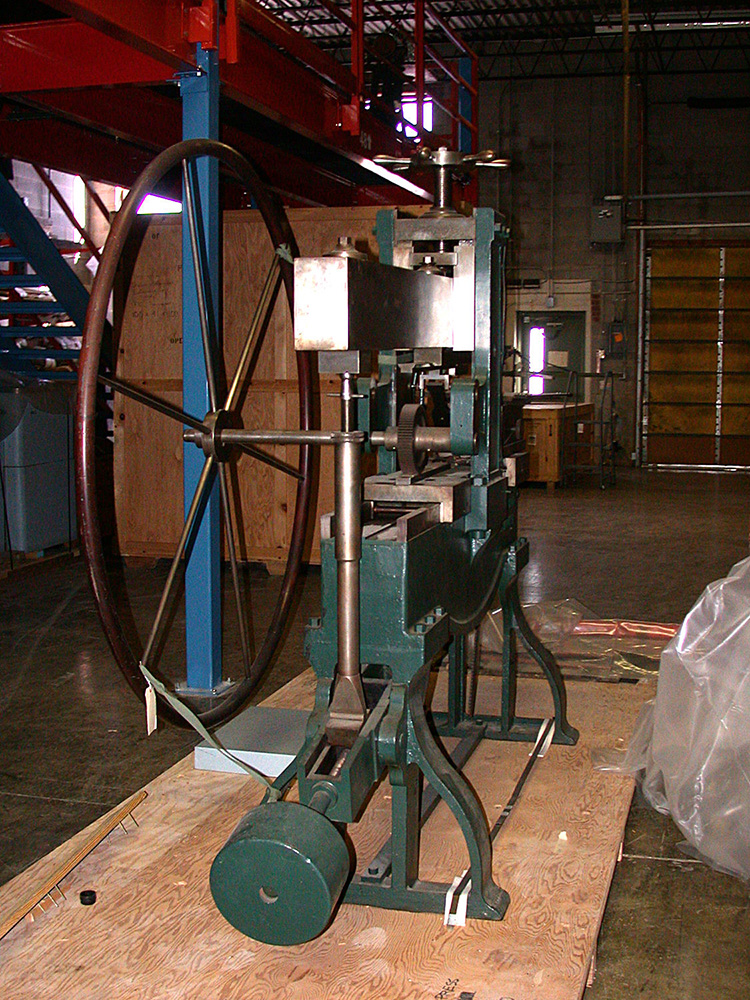
Metal frame painted green. Two light sockets with bulbs and switch attached to frame. Large turning wheel attached to side of machine. This transfer press was purchased in 1890 by the Bureau of Engraving and Printing. The average time required to transfer one postage stamp plate was twenty hours. It was also capable of applying pressure up to fifteen tons.
The first transfer presses sunk the image on the die directly into the printing plate, causing rapid wear on the die. In 1800 Jacob Perkins of Newburyport, Massachusetts, invented a method which greatly improved the transfer process. He conceived the idea of transferring an image first from the die to a flat copper plate and then from the flat plate to a copper printing plate. By transferring from a die to a transfer plate, the die was preserved from wear. But when he began engraving on steel, he found that detail was lost using a flat transfer plate because the plate-to-plate transfer press could not develop sufficient pressure. This problem was solved by the invention (again by Perkins) of a transfer roller in place of a flat plate. The advantage of using a transfer roller instead of a flat plate as the transferring medium is that the engraving can be transferred under much greater pressure. This is because the contact area between the roller and the plate is much smaller than the contact area between two flat plates. Force is focused at the point of contact between a small portion of the roller and the plate. The resulting impression of the design is deeper. For the first time, transferring onto steel became possible. This meant that images could be transferred to a steel plate, which could print many thousands of images before wearing out.
The early transfer presses developed pressure by means of a hand wheel and worm gear mounted above the transfer roller. Perkins invented a lever system in 1819 which greatly increased the mechanical advantage and the pressure delivered. The lever press was improved several times in the next fifty years, and some firms used it well into the twentieth century. A leading manufacturer was David Gilbert and Sons, Walnut Street, Philadelphia. A rose engine ratchet gauge was adapted for use on the press, greatly improving the accuracy of laying down images. The transfer press shown was purchased in 1890. It is of the worm-gear and beam design. In the photograph, it does not have a transfer roll mounted on it. The plate was traversed precisely by turning the large wheel on the side. The transfer roll was lowered by the worm-geared wheel on top. Pressure was applied by stepping on the round weight mounted on the end of the lever below the plate.
